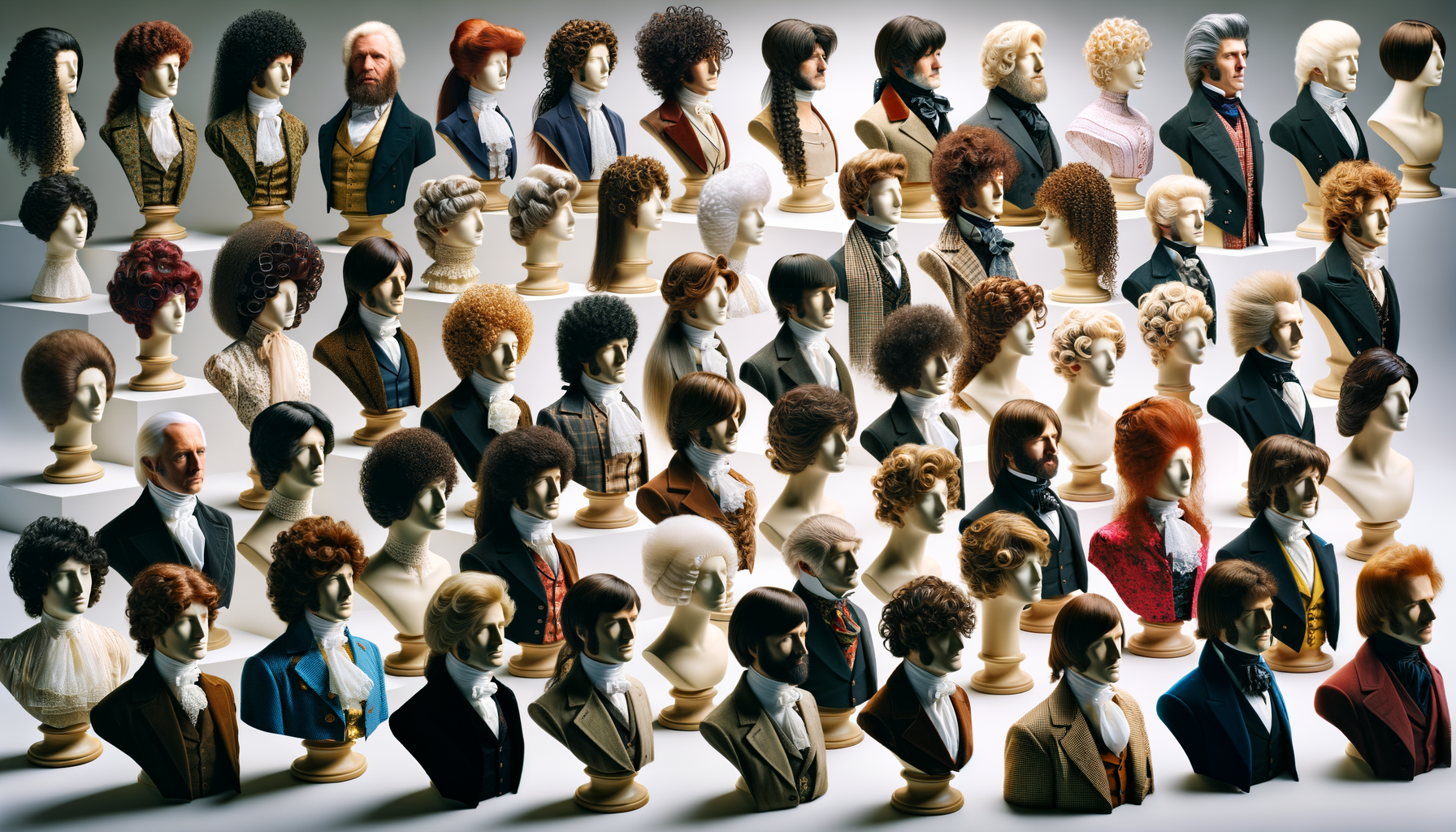Exploring the World of Wigs: A Comprehensive Guide
Wigs have become a versatile and essential accessory for many, offering both style and practicality.

The Evolution and History of Wigs
Wigs have a fascinating history that dates back thousands of years. The ancient Egyptians are among the earliest known cultures to have used wigs, primarily for protection against the sun and as a status symbol. Over time, wigs evolved from being practical items to becoming significant fashion statements. In the 17th and 18th centuries, wigs were particularly popular in Europe, where they were worn by both men and women of high social standing. These elaborate wigs, often powdered and adorned with accessories, were symbols of wealth and power.
The 20th century saw wigs transforming into accessible fashion items, thanks to advancements in materials and manufacturing techniques. Synthetic fibers made wigs more affordable, and the cultural shifts of the 1960s and 70s brought wigs into mainstream fashion. Today, wigs are used for a variety of reasons, including fashion, medical needs, and cultural practices, continuing to play an essential role in personal expression.
Types of Wigs: Synthetic vs. Human Hair
When it comes to choosing a wig, one of the primary considerations is the material: synthetic or human hair. Each type has its advantages and can cater to different needs and preferences.
Synthetic wigs are made from man-made fibers and are known for their durability and affordability. They often come pre-styled, which means they require minimal maintenance and can withstand various weather conditions without losing shape. However, they may not offer the same natural look and feel as human hair wigs.
Human hair wigs, on the other hand, provide a more authentic appearance and can be styled just like natural hair. They tend to be more expensive and require more care, including regular washing and conditioning. For those seeking a natural look and the ability to style their wigs freely, human hair wigs are an excellent choice.
- Pros of Synthetic Wigs: Cost-effective, low maintenance, weather-resistant.
- Cons of Synthetic Wigs: Limited styling options, less natural look.
- Pros of Human Hair Wigs: Natural appearance, versatile styling.
- Cons of Human Hair Wigs: Higher cost, requires regular care.
Choosing the Right Wig for Your Needs
Selecting the right wig involves considering various factors, including lifestyle, budget, and personal preferences. For those new to wigs, it can be helpful to start by identifying the primary purpose of the wig. Is it for daily wear, occasional use, or a specific event?
Consider the following when choosing a wig:
- Budget: Determine how much you are willing to spend. Synthetic wigs are generally more affordable, while human hair wigs can be a long-term investment.
- Style: Think about the hairstyle and color that will complement your features. Many wigs are available in a wide range of colors and cuts to suit different tastes.
- Comfort: Ensure the wig fits well and feels comfortable. Adjustable straps and breathable caps can enhance comfort, especially for prolonged wear.
- Maintenance: Consider how much time you are willing to dedicate to wig care. Synthetic wigs require less upkeep, while human hair wigs need regular styling and conditioning.
By evaluating these factors, you can find a wig that not only meets your needs but also enhances your style and confidence.
Wig Care and Maintenance
Proper care and maintenance are crucial for prolonging the life of your wig and keeping it looking its best. The care routine will vary depending on whether you have a synthetic or human hair wig.
For synthetic wigs, regular cleaning with a gentle shampoo designed for synthetic fibers is essential. After washing, allow the wig to air dry on a wig stand to maintain its shape. Avoid using heat styling tools, as they can damage synthetic fibers.
Human hair wigs require a bit more attention. Use sulfate-free shampoos and conditioners to keep the hair healthy and moisturized. Regularly detangle the wig with a wide-tooth comb to prevent knots and tangles. Unlike synthetic wigs, human hair wigs can be styled with heat tools, but it’s important to use a heat protectant spray to minimize damage.
By following these care instructions, you can ensure your wig remains in excellent condition, providing you with a reliable and stylish accessory for any occasion.
The Cultural Significance of Wigs
Wigs hold significant cultural importance across various societies, serving not only as fashion accessories but also as symbols of identity and tradition. In many African cultures, wigs are used to express individuality and creativity, with intricate styles that reflect personal and cultural heritage.
In the entertainment industry, wigs are indispensable tools for actors and performers, allowing them to transform into different characters and personas. Historical reenactments and theatrical productions rely heavily on wigs to accurately depict different eras and characters.
Moreover, wigs play a vital role in the lives of individuals experiencing hair loss due to medical conditions or treatments. They offer a sense of normalcy and confidence, helping people feel more like themselves during challenging times.
Overall, wigs are more than just hairpieces; they are powerful tools for self-expression, cultural representation, and personal empowerment.